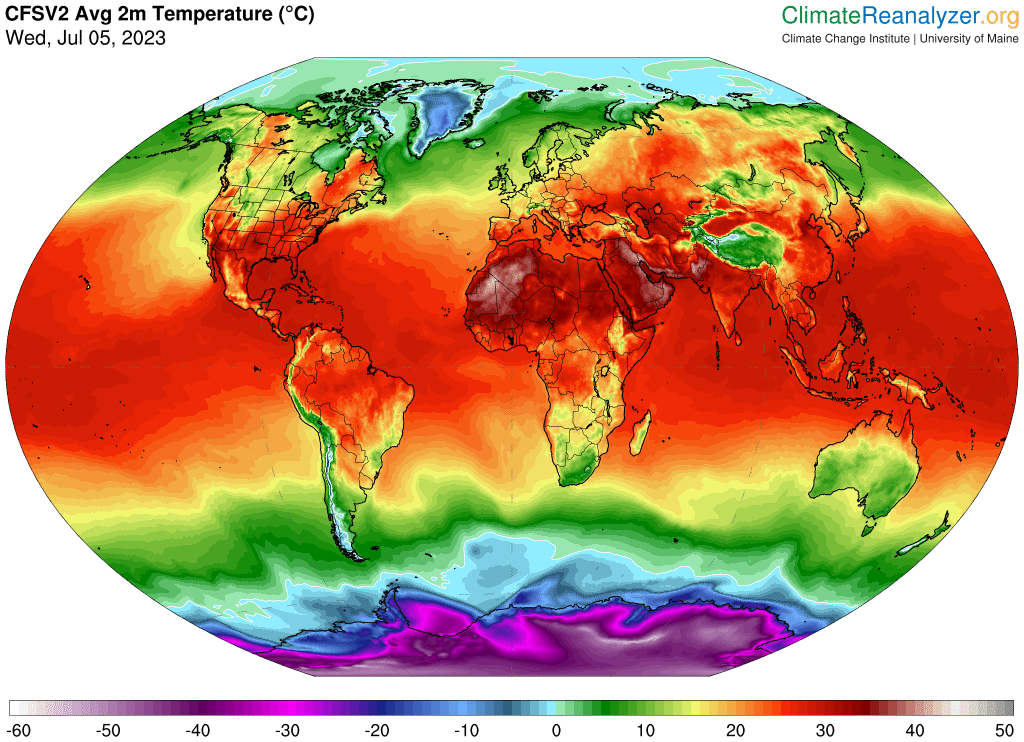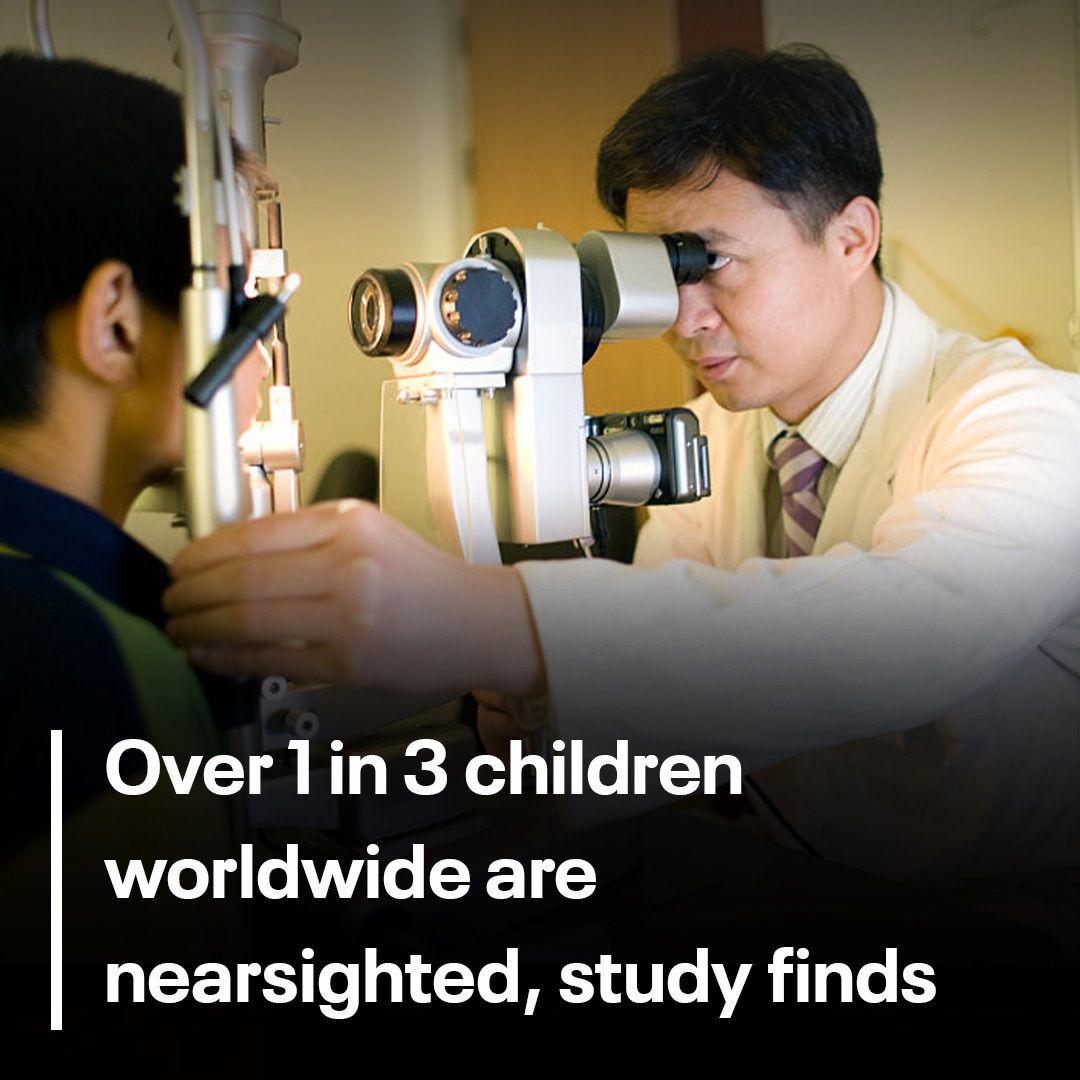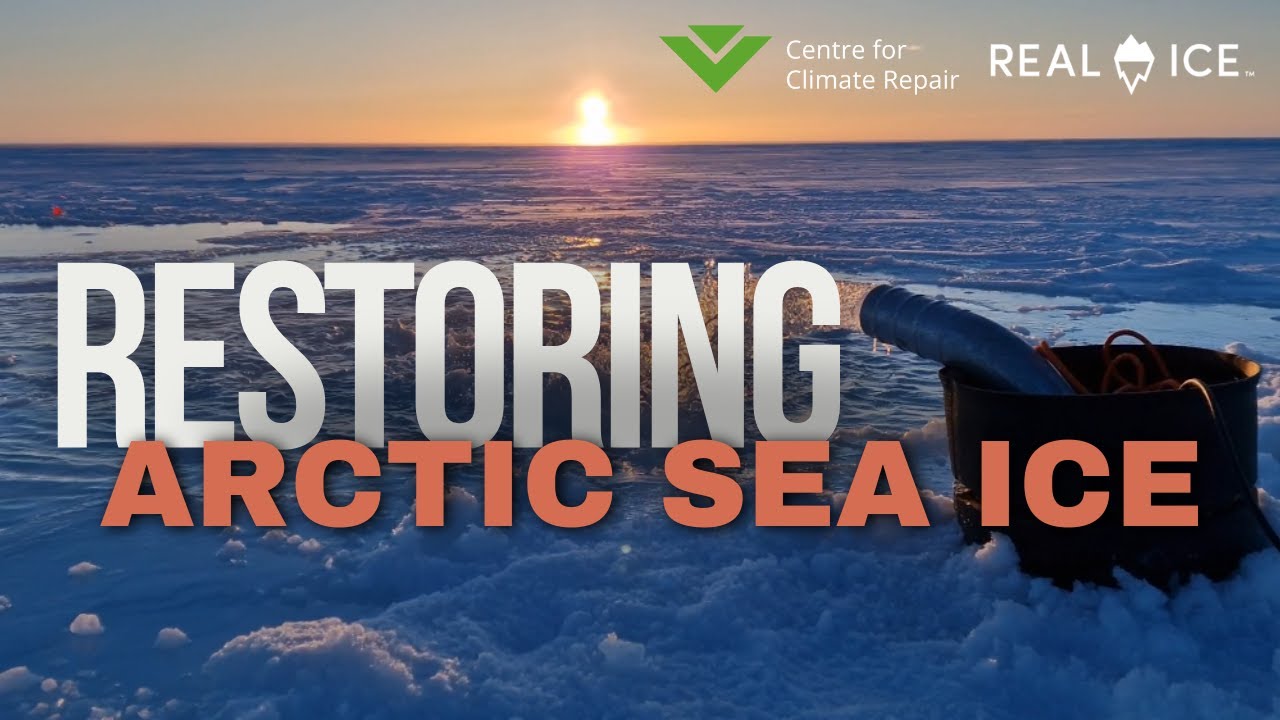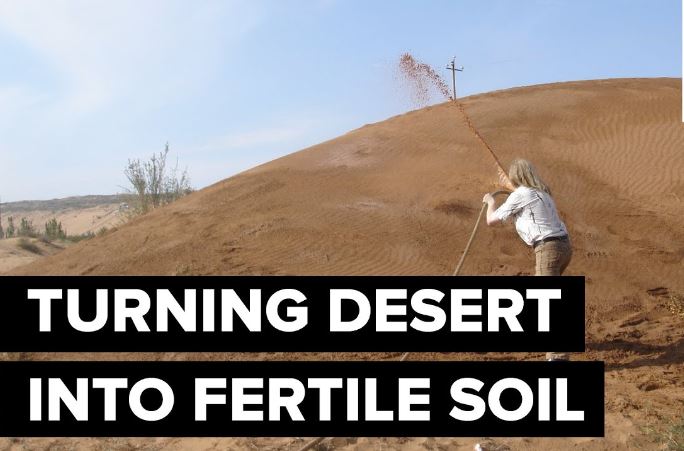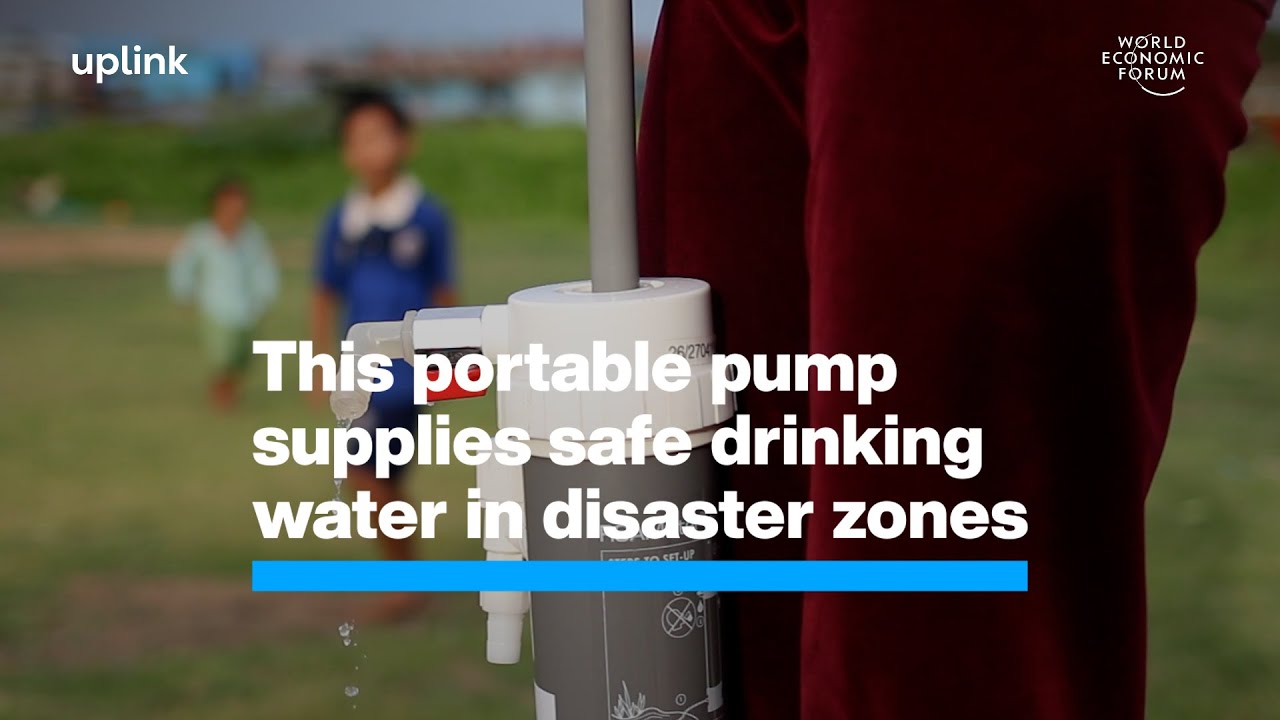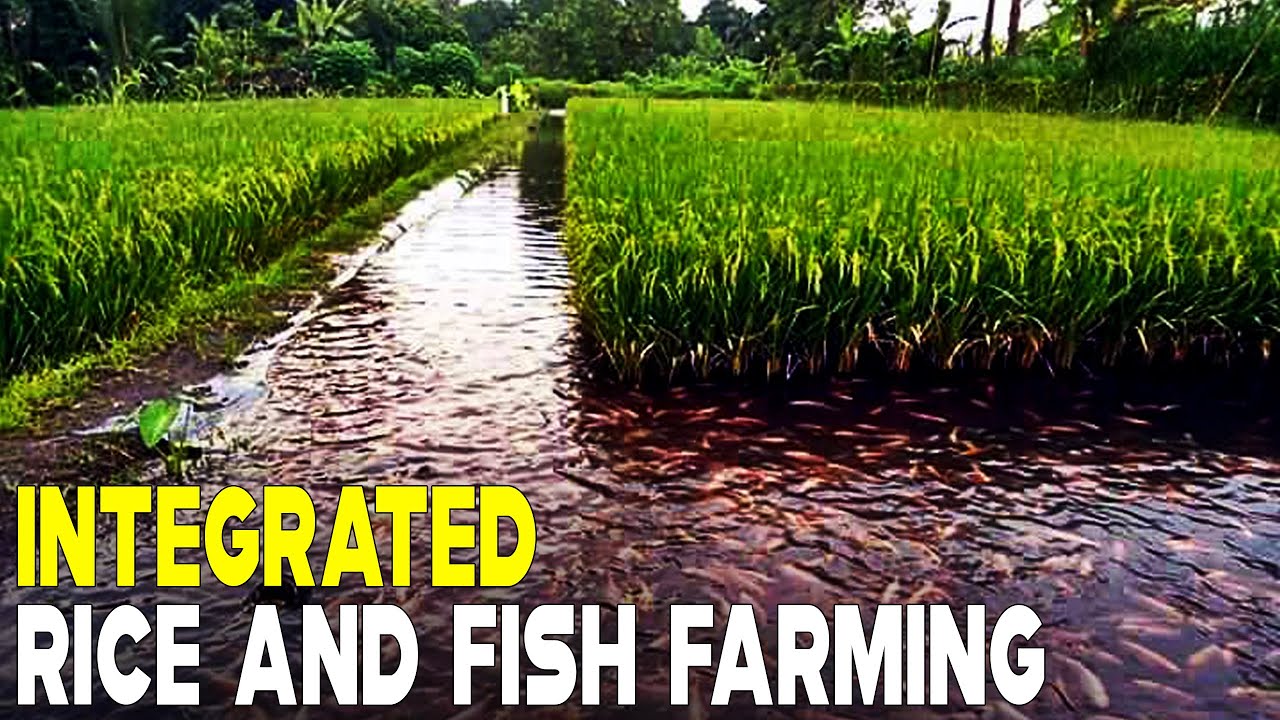Overpopulation Defined
the condition of having a population so dense as to cause environmental deterioration, an impaired quality of life, or a population crash .
the condition of having a population so dense as to cause environmental deterioration, an impaired quality of life, or a population crash .
24.10.2025
(109) Ethiopia Is The Leader In African Green Development
02.08.2025
(108) Instagram Teen Accounts: Just One Front In The Fight For Mental Health
24.06.2025
(107) Butterflies Are Disappearing At a ‘Catastrophic’ Rate Globally
19.03.2025
(106) New Hydrogel Material Removes Microplastics From Water
16.01.2025
(105) Tire Shredding Machine Which Process 30 Tons of Tires Per Hour
22.11.2024
(104) From Forgotten Grain to Superfood, Millets’ Comeback in Health and Nutrition
09.10.2024
(103) 1 in 3 Children Are Now Nearsighted Globally
13.09.2024
(102) The 'Insane' Plan To Save The Arctic's Sea-Ice
20.08.2024
(101) European Heatwave Killed Over 47,000 People In 2023
25.07.2024
(100) Solutum, Eliminating Plastic Waste. For Good.
26.06.2024
(99) Liquid Natural Clay Turns Desert Sand Into Fertile Soil in Just Seven Hours
18.05.2024
(98) WaterROAM Gets Clean Drinking Water Without Any Electricity
25.04.2024
(97) The Ancient Tradition Of Rice Fishing Has Multiple Modern Benefits
20.03.2024
(96) 2023 Confirmed As World's Hottest Year On Record
30.01.2024
(95) Purifies Contaminated Acid Mine Water Safe For Local Communities
22.12.2023
(94) World Humanitarian Day 2023
25.11.2023
(93) Canadian Man Fights Climate Change By Planting 23,000 Trees In 24 Hours
20.10.2023
(92) Turning Textile Waste Into Building Blocks: FabBRICK
17.09.2023
(91) Fionn Ferreira: Removing Microplastics From Water
16.08.2023
(90) Europe’s Largest Green Facade
02.06.2023
(89) Shredded Diapers Could Replace 40% of Concrete Sand in Construction
26.05.2023
(88) Why Loneliness Could Be The Biggest Threat To Your Health
18.04.2023
(87) Couple Created New Rainforest By Planting 2 Million Trees Over 20 Years
06.04.2023
(86) New Zealand Bans Smoking For Future Generations
05.02.2023
(85) Singapore Is Leading The Way In Recycling Wastewater
12.12.2022
(84) Bangladesh’s Farmers Revive Floating Farms As Seas Rise
12.11.2022
(83) Handmade Soap Keeps Malaria-Carrying Mosquitos Away in Uganda
07.09.2022
(82) Antarctica's "Doomsday Glacier" Could Raise Global Sea Levels By 10 Feet
18.08.2022
(81) Moss Grows On Concrete, Empowering Cities To Respire And Live Green
09.07.2022
(80) Converting Plastic Waste To Fuel in India
27.06.2022
(79) Eight Climate Change Records The World Smashed In 2021
13.06.2022
(78) Regenerative Farming Boosts Soil Health, Yielding More Nutritious Crops
05.06.2022
(77) Once Called Crazy, An Indonesian Eco-Warrior Turned 250 Hectares Arid Hills Green In 24 Years
20.05.2022
(76) An Airbus Powered By Used Cooking Oil
22.04.2022
(75) Sustainable Toilets: Serving People, Serving the Environment
15.04.2022
(74) Tuberculosis Deaths On The Rise Again , 1.5 Million People Died From TB In 2020
06.03.2022
(73) This Organic Milk Farm Was Set Up In One Of China’s Largest Deserts
24.01.2022
(72) Antibiotic-Resistant Superbugs Kill More People Than AIDS Or Malaria: Study
28.12.2021
(71) The First Algae-Powered Building Presents Unique Renewable Energy Solution
31.10.2021
(70) Over 2 Billion People To Be Affected If Melting Of Himalayan Glaciers Continue
07.10.2021
(69) Global Report on Food Crises 2021
26.09.2021
(68) Costa Rica Running Entirely on Renewable Energy
12.09.2021
(67) The Innovation Turning Desert Sand Into Farmland
|
By mixing clay nanoparticles with water and then bonding them to sand particles, the arid soil can be conditioned to bear fruit. Normal sand particles are very loose so they have a very low water retention capacity and that does not allow the soil to be fertile. Morten explains that when Liquid Nanoclay is added to the sand, these particles come together, which means that they can retain water for a long time increasing the possibility of agricultural yield. Liquid Nanoclay (LNC) is the name of the discovery of the Norwegian scientist Kristian Morten Olesen .
|
23.07.2021
(66) Overfishing & Destructive Fishing
13.06.2021
(65) How Digging Holes Can Save Kenyan Dryland Farmers ?
10.04.2021
(64) Why The World Is Running Out Of Sand ?
21.03.2021
(63) Urbanization Causes and Impacts
17.01.2021
(62) Camera Shows Your Carbon Footprint
26.12.2020
(61) Turning CO2 Into Rocks
17.12.2020
(60) Affordable Housing By Plastic Waste
12.12.2020
(59) This 2-Acre Vertical Farm Produces More Than ‘Flat Farms’ That Are Using 720 Acres
05.12.2020
(58) Five Ways Coronavirus Is Deepening Global Inequality
10.10.2020
(57) Nobel Peace Prize: UN World Food Programme Wins for Efforts to Combat Hunger
30.07.2020
(56) Blood Farms: Cruel Horse Hormone Scandal as Pregnant Mares' Blood Is Injected Into Pigs and Other Animals
14.06.2020
(55) Which Country Has The Best Environmental Performance ?
24.03.2020
(54) How Does The COVID-19 Coronavirus Kill? What Happens When You Get Infected.
16.02.2020
(53) Generating Water from Air Humidity to face Global Drought.
22.01.2020
(52) As Australia Burns, Its Leaders are Clinging to Coal.
06.11.19
(51) Over 11,000 Scientists From 153 Countries Declare "Climate Emergency"
21.10.19
(50) United Nations Confirms the Ocean Is Screwed.
06.10.19
(49)The Cutting Edge Invention Turns farming Waste Into Fuel for Homes.
08.09.19
(48)Global Heating Made Hurricane Dorian Bigger, Wetter – and more Deadly.
07.09.19
(47)UN Warning: Food Is Going To Get REALLY, REALLY EXPENSIVE.
02.09.19
(46) 22 Inventions That Are Saving The Earth.
15.08.19
(45)Carbon Dioxide (CO2)'s Impact on Fruits & Vegetables are Devastating.
31.07.19
(44)According to a new UN climate report, we only have 30 years left to live.
16.07.19
(43)Water Shortages to Affect 52% of World’s Population by 2050
18.06.19
(42)Deadly Record-Breaking Global Heat Waves.
18.04.19
(41)Amount of food wasted by Malaysians enough to feed 12 million people a Day
29.03.19
(40)‘Asia’s water tower’ is in danger as 80 per cent of glaciers in China may disappear in the 21st Century.
25.03.19
(39)The 15 years old Climate Activist Greta Thunberg nominated for Nobel peace prize.
08.03.19
(38)These ’10 Year Challenge’ Climate Change Photos Are Absolutely Haunting.
The “10 year challenge” has been sweeping social media with people posting pics of themselves in 2009 versus 2019. The results have been everything from adorable to hysterical, but a new set of pictures are popping up to show a more somber side to what can happen in a decade — the terrifyingly rapid changes in our environment. Environmental activists and scientists are using the challenge to highlight a very real concern — the dramatic changes to our planet. If you read the news, it’s no surprise to hear, but seeing the images side-by-side puts another, more depressing lens on the issue. According to Business Insider, 2018 was the hottest year on record for the world’s oceans (and are heating up 40 percent faster than previously thought), sea levels are rising, coral reefs (and the ecosystems they support) are being wiped out, and Antarctic ice is melting at a faster rate than in previous years (six times faster than in the 1980s). Glaciologists think half of Switzerland’s small glaciers will be eradicated within the next 25 years, according to Reuters. Credit: NOW THIS
22.02.19
(37)Companies are seriously underestimating how climate change will affect business.
As climate change progresses, it will continue to trigger more intense storms, drought, wildfires, sea-level rise, species extinction, and crop failure. The recent National Climate Assessmentrevealed that regional economies and industries dependent on natural resources are increasingly vulnerable to the impacts of climate change – as are energy systems. Warmer climates will increasingly disrupt international trade, prices, and supply chains, and costs could reach hundreds of billion dollars per year by the end of the century. Climate change doesn’t just threaten ecological balance, it threatens corporate balance sheets. Companies and investors are waking up to the dangers posed by climate change and extreme weather. Many now consider environmental risks, such as droughts and wildfires, to be even more dangerous than turbulent markets, cyberattacks or geopolitical snafus. Credit: THE YEARS PROJECT
25.01.19
(36)Greenland’s ice sheet is melting at its Fastest Rate in centuries.
A paper earlier this year reported that Western Greenland is melting at its fastest rate in 400 years. Another study last year found that one section of Greenland suddenly started melting 80 percent faster. There are several mechanisms at work here. Greenland gains some ice in the winter and loses some in the summer, but as the planet has warmed, the latter has outpaced the former. The ice in Greenland is also getting darker, as soot carried through the air and microorganisms like algae coat the ice. This allows the ice to absorb more solar energy, thereby heating up and melting faster, which in turn allows the microorganisms to spread further. The key uncertainty for sea level rise is what the world will do to limit global warming, but on our current trajectory, we can expect upward of FIVE feet of sea level rise by the end of the century. Credit: TIME
The Ice on Greenland would raise global sea levels by 20 feet if it were all to melt.
18.01.19
(35)This desert farm is growing 15% of Australia's tomatoes using only sunlight and seawater.
Part greenhouse, part solar plant, this farm is harvesting food from the Australian desert. Officially launched in October 2016 at Port Augusta in South Australia after a six-year pilot, it's the first outpost of Sundrop Farms. The company wants to make farming more resilient to climate change by using the desert's plentiful sunshine, as well as piped-in seawater, to produce food in arid environments. "Our farm grows more than 15,000 tonnes of tomatoes each year," says CEO Philipp Saumweber. That accounts for 15 per cent of the Australian tomato market. Sundrop's tomato plants are grown hydroponically, free of soil, in a watery solution fed by nutrient-rich coconut husks. "Intake water is pumped, using sustainable electricity produced by our concentrated solar plant, in a 450mm pipe over 5km to our desalination unit," Saumweber explains. The solar plant, which flanks the eight-hectare building, is made of 23,000 mirrors reflecting the Sun's heat on to a solar tower. This transforms 1,000,000 litres of seawater each day into fresh water. It also drives a turbine to generate electricity. Additional water is also taken from the roof of the greenhouse.
Credit: Sundrop Farms
Credit: Sundrop Farms
12.01.19
(34) 2018 TEN Worst Climate Change Disasters Did in Damage
From floods to extreme heat, 10 of the worst climate-linked disasters in 2018 caused at least $184.8 billion worth of damage, said a study released by the charity Christian Aid on Thursday. Experts say a warming world will lead to sweltering heatwaves, more extreme rainfall, shrinking harvests and worsening water shortages, causing both monetary losses and human misery. The report’s authors collated total cost figures using data from sources including governments, banks and insurance firms, though in some cases the figures only covered insured losses and also failed to take account of the human costs of such events. They added that rising temperatures would continue to drive extreme weather events as they urged action to prevent further global warming, which would impact the poorest and most vulnerable communities hardest. Credit: THE YEARS PROJECT
12.01.19
(33)Pollution And Climate Change Cause 'Dead Zones' In World's Oceans To Spread
Ocean regions with low oxygen levels have a huge impact on aquatic organisms and can even destroy entire ecosystems. Areas of extremely low oxygen, known as oxygen minimum zones or “dead zones”, are estimated to constitute 10% and rising of the world’s ocean. This expansion has been attributed to a warming climate, which increases water temperature, changes ocean circulation, and decreases the solubility of oxygen in sea water. At the same time fertiliser and pesticide run-off from farming and other human activities leads to rising levels of nutrients such as nitrogen and phosphorous reaching the sea. To prevent the possibility of a 1,000-year (or longer) recovery period from a dead zone seafloor, we need to be much more aware of how the various environmental aspects are connected. An understanding of how de-oxygenation has affected the ocean in the past and how our actions are affecting the ocean in the present is critical to either preventing a recurrence or at least minimising effects of what we have already done. Credit: THE YEARS PROJECT
12.01.19
(32)Newly Developed Gel Extracts Drinking Water From The Air
A cheap hydrogel that can suck moisture out of the air and then release it on demand might be the answer to drinking water shortages in arid regions. Researchers from the King Abdullah University of Science and Technology (KAUST) suggest an inexpensive hydrogel-based material they have developed can suck water from the air, even in low humidity conditions and release the water back out when warmed by sunlight. There are many areas around the globe that are affected by a lack of access to clean water. The earth’s air is a possibly untapped resource for clean water. It is estimated that the Earth's air contains more than 13 trillion tonnes of potable water. A simple 35-gram prototype of the completed extraction device was left outside and managed to collect 37 g of water in weather conditions of 60 percent humidity. Credit: Seeker
26.12.18
(31)Climate change will make rice less nutritious, putting millions of the world’s poor at risk.
The future of rice production is now threatened because of rising sea levels and temperature increases attributed to climate change. Rice will become less nutritious as carbon dioxide levels in the atmosphere rise, potentially jeopardising the health of the billions of people who rely on the crop as their main source of food, new research suggests. About two billion people rely on rice as a primary food source and among those that are the poorest, often the consumption of rice in terms of their daily calories is over 50%, The production of rice, one of the world's most important crops, is facing major problems such as slow growth and climate change, which could increase its price by more than 30 per cent by 2050. Credit: TheYearsProject
24.11.18
(30)Ocean Shock: Big aquaculture bulldozes Borneo.
The company is Sunlight Inno Seafood. Owned by Cedric Wong King Ti, a Malaysian businessman known as "King Wong," it has bulldozed swaths of mangroves in the Tombonuo's homeland in northern Borneo to make space for plastic-lined ponds filled with millions of king prawns. The shrimp are destined to be fattened for three months, scooped up in nets, quick frozen, packed into 40-foot refrigerated containers and loaded onto cargo ships bound for distant ports. Nevertheless, some governments in Southeast Asia have concluded that it's worth sacrificing more mangroves in return for the export earnings and employment the projects can generate. Among them is the Malaysian state of Sabah, which is a partner in King Wong's shrimp farm. The Sabah Environmental Protection Association, a non-governmental organisation, says Sunlight Seafood has already cut down 2,300 acres of mangroves, citing satellite imagery. Credit: Seeker
03.11.18
(29)Humanity Has Wiped Out 60% of Global Wildlife in the Past 45 Years, WWF Report Says.
In nearly 45 years, humanity has wiped out 60% of global wildlife populations, according to a newly released Living Planet Report from the World Wildlife Fund, the animal rights and conservation organization. What’s more, the huge loss of animal life is also a threat to humanity and the planet, scientists say. The WWF’s report comes just weeks after a UN report on climate changewarned that global temperatures are rising quickly, and risk rising to 1.5 degrees, which would wipe out most of the planet’s coral reefs and cause severe heatwaves. “Time is running out,” the report says. Credit: WWF
22.9.18
(28)Ending Poverty & Hunger With Just a Fraction of Global Military Spending.
Eradicating extreme poverty and hunger—two of the Sustainable Development Goals (SDGs) agreed by the United Nations in 2017—may seem far out of reach. But, according to a new study, it could done with about ten percent of the world's military spending. A price has been set and estimated by the United Nations to solve this crisis – $116 billion a year. It may seem like a large sum of money, but when compared to the 10 countries defense budget – $1,243 billion in 2016 – $116 billion seems more attainable.
Credit: ScienceNaturePage
Credit: ScienceNaturePage
22.9.18
(27)How Much Food Do We Waste? Probably More Than You Think
Globally, we throw out about 1.3 billion tons of food a year, or a third of all the food that we grow. That’s important for at least two reasons. The less the world wastes, the easier it will be to meet the food needs of the global population in coming years. Second, cutting back on waste could go a long way to reducing greenhouse gas emissions. “As you get higher and higher income, you get more and more profligacy in food waste,”. Food waste and loss has a huge carbon footprint: 3.3 billion tons of carbon equivalent. Credit: OUTRIDER
8.9.18
(26)Shocking secrets of the food industry.
- There are a multitude of chemicals used in processed food that do not have to be in any way disclosed, as they’re considered “processing aids”
- The goal of food technologists is to reduce the amount of real ingredients by finding substitutes that mimic the real thing; the end product looks, smells, and tastes like “good food,” . Credit: 5-MINUTE CRAFTS
1. Processed Foods Are Addictive and Can Cause You To Overeat
2. Processed Foods Are Linked to Obesity
3. Processed Foods Often Contain Ingredients That Do Not Follow The Principle of Food Combining
4. Processed Foods Contribute to An Imbalanced Inner Ecosystem
5. A Diet High in Processed Foods Can Lead to Depression, Memory Issues and Mood Swings
6. Processed Foods Often Go Hand In Hand With “Eating on the run” or Multitasking
7. Nutrition Labels on Processed Foods Are Often Misleading and Have Harmful Health Effects
8. Diets High in Processed Meats (like hot dogs and deli meats) Have Been Linked to Various Forms of Cancer
9. Eating Too Many Processed Foods Can Lead to Infertility and Malnutrition
10. Processed Foods are Made For Long Shelf-life, Not Long Human Life!
2. Processed Foods Are Linked to Obesity
3. Processed Foods Often Contain Ingredients That Do Not Follow The Principle of Food Combining
4. Processed Foods Contribute to An Imbalanced Inner Ecosystem
5. A Diet High in Processed Foods Can Lead to Depression, Memory Issues and Mood Swings
6. Processed Foods Often Go Hand In Hand With “Eating on the run” or Multitasking
7. Nutrition Labels on Processed Foods Are Often Misleading and Have Harmful Health Effects
8. Diets High in Processed Meats (like hot dogs and deli meats) Have Been Linked to Various Forms of Cancer
9. Eating Too Many Processed Foods Can Lead to Infertility and Malnutrition
10. Processed Foods are Made For Long Shelf-life, Not Long Human Life!
25.8.18
(25)Putting algae on the menu could help lower pollution, fight world hunger.
Commercial production of marine microalgae as a staple human food and feed for animals and farmed fish. These tiny organisms are the ultimate source of omega-3 fatty acids and amino acids that humans need in our diets, and which many of us get by eating fish. Microalgae are a nearly untapped resource, and are found in both freshwater and marine aquatic systems. Although they are only few micrometers in size, they produce amino acids, fatty acids, vitamins, minerals, antioxidants, polymers and carbohydrates. One sustainability metric for comparing protein production from animals, plants and marine algae is the amount of land and water needed to produce an equal quantity of essential amino acids from each type of food. We calculate that producing one kilogram of beef-sourced essential amino acids requires 148,000 liters of freshwater and 125 square meters of fertile land. In contrast, producing the same amount from an algae farm raised in an open pond with brackish water requires only 20 liters of freshwater and 1.6 square meters of nonfertile land. Credit: attn:
25.8.18
(24)Solubag – The Invention That Just Might Save The Oceans.
A new company based in Chile has developed Solubag, a 'plastic' bag that dissolves in water. Their bags work just as well as traditional plastic bags for carrying item around, but they have several major advantages. These bags are not made using petroleum products. That means their production does not use up the limited amount of crude oil we have and does not lead to the increased release of hydrocarbons into the environment. The really big feature of these bags though in term of protecting our seas and oceans is the fact that they are completely soluble in water. This means that within five minutes of entering the water they are fully dissolved. Removing the chance of an animal accidentally ingesting the bag, as a result of mistaking it for food. Credit: Reuters
25.8.18
(23)Fish-friendly whirlpool turbine makes hydropower green again.
A company from Belgium wants to make hydropower green again. Turbulent’s whirlpool turbine can be installed in most canalsor rivers, harnessing flowing water to generate power for as many as 60 homes, according to Business Insider. The clean, fish-friendly energy source can operate at night and during the day. Credit: Turbulent
11.8.18
(22)Climate Impacts on Water Resources.
In many areas, climate change is likely to increase water demand while shrinking water supplies. This shifting balance would challenge water managers to simultaneously meet the needs of growing communities, sensitive ecosystems, farmers, ranchers, energy producers, and manufacturers. In some areas, water shortages will be less of a problem than increases in runoff, flooding, or sea level rise. These effects can reduce the quality of water and can damage the infrastructure that we use to transport and deliver water. Credit: Seeker+SCI
11.8.18
(21)Meet Wave Star: Harnessing ocean waves for unlimited clean energy.
The Denmark-based company are developing a process – called the Wavestar – that converts the energy from waves through floats on the surface of the ocean. The concept was invented by sailing enthusiasts Niels and Keld Hansen in 2000. The challenge was to create a regular output of energy from periodic ocean swells and waves that are 5-10 seconds apart . This was achieved by developing a floating machine with a row of half-submerged buoys, which rise and fall in turn as the wave passes. This rise and fall movement allows energy to be continually produced despite waves being periodic. Credit: Wavestar
11.8.18
(20)Eco-Friendly Replacement For Plastic Wrap Made From Crab Shells.
Researchers have found that instead of going into garbage , crab shells could be going into a new form of biodegradable packaging . According to J. Carson Meredith, one of the project’s participating researchers and a professor at Georgia Tech’s School of Chemical and Biomedical Engineering, the product the team is working on is remarkably similar in texture and appearance to the common petroleum-derived plastic used in soda bottles and potato chip bags—and it might even work better at keeping food fresh.
Credit: Georgia Tech
Credit: Georgia Tech
20.7.18
(19)This device turns your trash into fuel.
The machine, dubbed the 'Home Energy Resources Unit' or 'Heru' works by filling up the machine's main chamber with rubbish and food waste. Plastic coffee cups and bottles, food trays, nappies and even grass cuttings are placed inside the cylinder which is the size of a washing machine drum. Credit: reuters
20.7.18
(18)Countless people who deny climate change.
Climate change is a major issue facing the world today, but some people believe that climate change is a hoax. This term refers to the changes in temperatures and climates experienced by people living in countries all around the world. Even some famous people believe that this is an example of fake science, and others believe that it exists but not to the degree that some say. Those who deny it exists have a few key reasons for their belief.
Credit: TODAY WATCHED
Credit: TODAY WATCHED
20.7.18
(17)From Europe to Africa, extreme and widespread heat raises climate concerns in hottest La Niña year to date on record.
The World Meteorological Organization (WMO) said the rising temperatures were at odds with a global cyclical climate phenomenon known as La Niña, which is usually associated with cooling. Even when the sun goes down, night is not providing the cooling relief it once did in many parts of the world. The concern is that weather fronts – hot and cold – are being blocked more frequently due to climate change. This causes droughts and storms to linger, amplifying the damage they cause. Credit: Washington Post
20.7.18
(16) Five cool inventions that could save the planet.
You've heard about the impact that our technology-driven population is having on the planet -- from cars, to energy factories, to the over-consumption of the earth's resources. It's causing a lot of problems. Yet, inventors are also using this technology to improve lives across the planet. Here are a few of their creations: Credit: attn:
14.7.18
(15)What will the world look like in 2030 & 2040 ?
- The world will need at least 50 percent more food, 45 percent more energy and 30 percent more water than it did in 2016, according to United Nations High Level Panel on Global Sustainability estimates.
- India will surpass China as the most populous country this year or earlier.
- According to projections by the United Nations, the world population of humans is estimated to be between approximately 7,800,000,000 (7.8 billion) and 8,500,000,000 (8.5 billion) people.
- A study estimated that due to continued economic growth in Africa, most impoverished Sub-Saharan African countries will graduate from low to middle-income status by 2030.
- It is estimated that the global middle class will number about 4.9 billion people, about 66% of whom will live in Asia,and 80% living in what in 2015 is considered the developing world.Overall, middle classes will be the most important economic and social sector, and a majority of the world's population will be out of poverty. Credit: ScienseNaturePage
14.7.18
(14)Deforestation: Facts, Causes & Effects
Deforestation is the permanent destruction of forests in order to make the land available for other uses. An estimated 18 million acres (7.3 million hectares) of forest, which is roughly the size of the country of Panama, are lost each year, according to the United Nations' Food and Agriculture Organization (FAO).
- About half of the world's tropical forests have been cleared, according to the FAO.
- The Earth loses 18.7 million acres of forests per year, which is equal to 27 soccer fields every minute, according to the World Wildlife Fund (WWF).
- It is estimated that 15 percent of all greenhouse gas emissions come from deforestation, according to the WWF. Credit: Rainforest Alliance
7.7.18
(13)Cape Town water crisis.
A drought in the Western Cape province of South Africa began in 2015 and is resulting in a severe water shortage in the region, most notably affecting the city of Cape Town. With dam levels predicted to decline to critically low levels, the city announced plans for "Day Zero", when if a particular lower limit of water storage was reached, the municipal water supply would largely be shut off, potentially making Cape Town the first major city to run out of water.
Credit: Now World
Credit: Now World
07.07.18
(12)Here are 6 foods available on future dinner tables .
Credit: Nameless Network
30.6.18
(11)China’s plastic waste ban will leave 111 million tons of trash with nowhere to go .
On December 31st, 2017, China put a halt to a lot of the plastic waste that foreign countries like the US sent to its shores for disposal. To calculate the impact of that ban, researchers at the University of Georgia looked at how much plastic waste China imported from 1988 to 2016. They then used that information to calculate that by 2030, the ban might leave 111 million metric tons of plastic trash with nowhere to go, according to a study published today in Science Advances. Credit: Brooks, Wang, Jambeck
30.6.18
(10)What Happens to Recycling After It's Collected ?
The separation process starts when the truck arrives at the Materials Recovery Facility (MRF). The process may vary from place to place, but each MRF has one goal: to separate and recycle different materials so they can be made into new products. Credit: NOW THIS
15.6.18
(9)Fruits and Vegetables Have Become Less Nutritious.
Because of soil depletion, crops grown decades ago were much richer in vitamins and minerals than the varieties most of us get today. Modern intensive agricultural methods have stripped increasing amounts of nutrients from the soil in which the food we eat grows. Sadly, each successive generation of fast-growing, pest-resistant carrot is truly less good for you than the one before. Credit: Popular Science
15.6.18
(8)Pulling fresh water from desert air .
Last October, a UC Berkeley team headed down to the Arizona desert, plopped their newest prototype water harvester into the backyard of a tract home and started sucking water out of the air without any power other than sunlight.The successful field test of their larger, next-generation harvester proved what the team had predicted earlier in 2019: that the water harvester can extract drinkable water every day/night cycle at very low humidity and at low cost, making it ideal for people living in arid, water-starved areas of the world. Credit: UC Berkeley
19.5.18
(7)The largest head tax passed in U.S. history to help the housing & homelessness crisis.
The Seattle City Council unanimously passed a compromise proposal Monday on the controversial employee head tax that aims to help the city's affordable housing and homeless crisis. Councilmember Lorena Gonzalez said she negotiated with Mayor Jenny Durkan and her staff on the new amendment, which was unveiled hours before the council vote. Gonzalez says the new terms with be $275 a head to raise between $45 million and $49 million a year, with a sunset clause January 1, 2024. It would only impact businesses with over $20 million a year in gross revenue. The head tax is the largest in U.S. history. Credit: Chicago Tribune
8.5.18
(6)Fatberg 'autopsy' reveals growing health threat.
Fatbergs, the congealed mass of fat and discarded items that are increasingly blocking Britain’s sewers, are the consequence of the plastic crisis in Britain and contain potentially deadly antibiotic-resistant bacteria, tests show. The forensic analysis revealed that cooking fat is the biggest contributor to the crisis, making up nearly 90% of the sample. It also showed a higher concentration of prohibited gym supplements than street drugs such as cocaine and MDMA. According to experts, the bacteria not only poses an immediate risk to operatives who work in sewers, but also to the public in the event of a blockage, as contents of the sewers could come back up through domestic or commercial pipes causing flooding to homes and businesses. Credit: Seeker+Sci
4.5.18
(5)Five things YOU can do to HELP the environment.
Going green is easier than you think. There are little things you can do every day to help reduce greenhouse gases and make a less harmful impact on the environment. Taking care of the Earth is not just a responsibility -- it's a privilege. Credit: SCI
24.4.18
(4)Rising ocean waters, scorching temperatures, food scarcity and disease - here's how humans could ultimately be responsible for the end of the world.
Population growth has been so rapid that there is no real precedent we can turn to for clues about the possible consequences. In other words, while the planet might hold over 11 billion people by the end of the century, our current level of knowledge does not allow us to predict whether such a large population is sustainable, simply because it has never happened before. Credit: NOW THIS
21.4.18
(3)Could feminism save the planet ?
Too many in the environmental movement have understood the importance of women’s empowerment narrowly and simply as improving sexual and reproductive health and rights in order to reduce population growth. This then also restricts the analysis on women’s empowerment to those countries where women do not have these rights. Many argue cogently that ensuring sexual and reproductive health and rights for women is essential in its own right but also as a means of empowering women as agents of environmental change.
Put simply, women make up half of society and therefore must be part of the solution. Credit: Re:
Put simply, women make up half of society and therefore must be part of the solution. Credit: Re:
21.4.18
(2)You use 16kg/35lbs of resources extracted from Earth every day , or 57kg/125lbs if you live in the western world.
Credit: SCIENCE NATURE PAGE
21.4.18
(1)This is 20 years of satellite observations of our ecosystems from space.
From space, satellites can see Earth breathe. A new NASA visualization shows 20 years of continuous observations of plant life on land and at the ocean’s surface, from September 1997 to September 2017. On land, vegetation appears on a scale from brown (low vegetation) to dark green (lots of vegetation); at the ocean surface, phytoplankton are indicated on a scale from purple (low) to yellow (high). This visualization was created with data from satellites including SeaWiFS, and instruments including the NASA/NOAA Visible Infrared Imaging Radiometer Suite and the Moderate Resolution Imaging Spectroradiometer. Credit: NASA
Poverty deprives people of adequate education, health care and of life's most basic necessities- safe living conditions (including clean air and clean drinking water) and an adequate food supply. The developed (industrialized) countries today account for roughly 20 percent of the world's population but control about 80 percent of the world's wealth.
Poverty and pollution seem to operate in a vicious cycle that, so far, has been hard to break. Even in the developed nations, the gap between the rich and the poor is evident in their respective social and environmental conditions.
Poverty and pollution seem to operate in a vicious cycle that, so far, has been hard to break. Even in the developed nations, the gap between the rich and the poor is evident in their respective social and environmental conditions.

